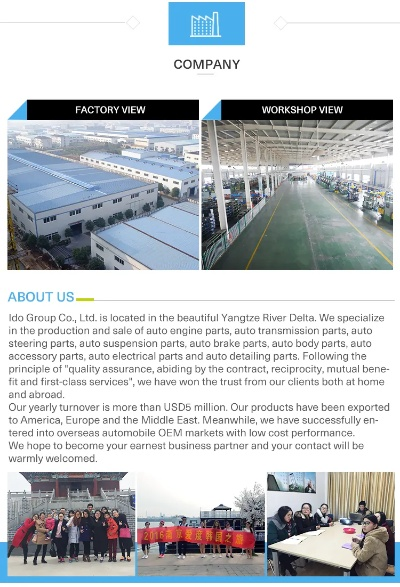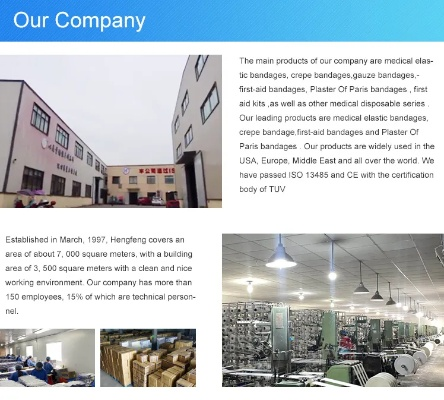The Struggle of Jinzhou Textile Factory:A Case Study in Corporate Bankruptcy
This study focuses on the process of Jinzhou Textile Factory's bankruptcy, which is a typical case in corporate bankruptcy. The factory has been struggling for years due to the decline of its main product and the increasing competition from other textile factories. In order to survive, Jinzhou Textile Factory began to seek help from banks, but the bank refused to lend money to it because of its poor financial condition. As a result, the factory faced a severe financial crisis and eventually had to declare bankruptcy. This case shows us that in today's market economy, companies need to have good financial management skills and be able to adapt to changes in the external environment in order to survive.
Introduction: In the competitive landscape of global textile markets, the downfall of a once-thriving enterprise is a stark reminder of the fragility of economic growth. The case of Jinzhou Textile Factory, which has recently been declared bankrupt, serves as a poignant example of how the unforeseen chain reaction of industry disruptions can lead to financial ruin. This essay delves into the complexities of corporate bankruptcy, examining the various factors that contributed to the downfall of Jinzhou Textile Factory and offering insights into the broader implications for the textile industry.
Factors Leading to Jinzhou Textile Factory's Downfall:

-
Economic Recession: The onset of the economic downturn in China in 2008 led to a significant decline in consumer spending power and a slowdown in domestic demand. This downturn had a ripple effect on industries across the board, including textile manufacturing, which saw a sharp decrease in orders from overseas markets.
-
Competition from Low-Cost Manufacturers: As competition intensified, many textile manufacturers found themselves unable to compete on price alone. They relied heavily on economies of scale, but this came at a high cost, leading to increased costs and reduced profit margins.
-
Technological Advancements: The advent of new technologies like automation and digitalization disrupted traditional manufacturing processes. While some companies adapted quickly, others failed to keep pace, resulting in outdated equipment and skills that were no longer marketable.
-
Environmental Regulations: The growing emphasis on environmental sustainability has made it more difficult for textile factories to operate without costly investments in pollution control and waste management. Many factories were forced to shut down or reduce their production levels due to these regulations.
-
Government Policies: Changes in government policies can have a significant impact on a company's success. For instance, the implementation of tariffs on imported textiles from other countries could significantly hurt a company's ability to sell its products abroad.
The Impact of Jinzhou Textile Factory's Downfall on the Textile Industry:
-
Job Losses: The bankruptcy of Jinzhou Textile Factory resulted in numerous job losses for its employees, who were left without recourse or compensation for their services. This not only affected the immediate workforce but also had long-term consequences for the local economy.
-
Capital Investment Difficulties: The closure of factories like Jinzhou Textile Factory created significant challenges for investors looking to invest in the textile industry. The lack of viable projects meant that capital was scarce, making it difficult for new businesses to secure funding.
-
Market Disruption: The sudden shutdown of a major player in the textile industry disrupted the supply chain and caused shortages in raw materials and finished goods. This led to higher prices and reduced consumer choice, further exacerbating economic difficulties.
-
Industrial Decline: The downfall of Jinzhou Textile Factory was not just a single event but part of a broader trend towards industrial decline in China. The loss of jobs and investment discouraged other companies from investing in the sector, further contributing to its downfall.
Case Study: One notable example of how the failure of a textile factory can have far-reaching effects is the case of the Shenzhen Textile Factory in China. The factory, which produced clothing and accessories for international brands like Nike and Adidas, faced similar challenges to those faced by Jinzhou Textile Factory. The factory's closure was attributed to several factors, including technological advancements that made its products obsolete, increased competition from cheaper manufacturers, and changes in government policies that favored foreign imports.
Conclusion: The story of Jinzhou Textile Factory's bankruptcy serves as a cautionary tale for other textile companies operating in the global market. It highlights the importance of staying ahead of technological changes, adapting to shifting consumer preferences, and managing the risks associated with economic fluctuations. As the textile industry continues to face challenges, it is essential for companies to remain innovative, flexible, and proactive in order to weather the storm and emerge stronger on the other side.
背景介绍
锦州纺织厂作为当地的重要产业之一,近年来经历了破产的困境,该厂曾是当地纺织行业的佼佼者,但由于市场环境的变化和内部管理不善,最终导致了破产,本文将通过案例分析,探讨纺织厂破产的原因和应对策略。
案例分析
破产原因
(1)市场环境变化:随着国内外市场竞争加剧,纺织行业面临着巨大的压力和挑战。
(2)内部管理不善:企业内部管理混乱,缺乏有效的经营策略和成本控制手段。
案例详情
(1)破产前的经营状况:该纺织厂在过去的几年里,经营状况持续下滑,市场份额逐渐减少。
(2)破产后的应对措施:政府和企业采取了一系列措施来应对破产,包括重组、转型和寻找新的发展机会。
(3)案例中的关键事件:包括企业重组、引入新的经营策略、加强成本控制等。
英文口语化内容
(一)破产前的准备与策略规划

前期准备
(1)市场调研:了解行业趋势和市场需求,制定针对性的营销策略。
(2)内部管理优化:加强内部管理,提高员工素质和经营水平。
策略规划
(1)寻求政府支持:积极寻求政府支持和帮助,争取更多的政策扶持和资金支持。
(2)转型发展:探索新的发展路径,寻找新的发展机会,实现产业升级和转型。
(二)破产后的应对与措施实施
政府介入与支持
(1)政府介入:政府为企业提供了必要的帮助和支持,包括税收减免、资金扶持等。
(2)政策引导:政府出台了一系列有利于企业发展的政策,鼓励企业进行改革和创新。
企业重组与转型
(1)企业重组:通过重组,优化企业结构,提高运营效率和管理水平。
(2)引入新经营策略:引入新的经营策略,提高企业的市场竞争力。
加强成本控制与管理
(1)加强成本控制:通过精细化管理、优化生产流程等方式,降低生产成本和经营风险。
(2)强化财务管理:加强财务管理,提高企业的财务透明度和稳健性。
寻找新的发展机会与合作伙伴
(1)寻找新的发展机会:积极探索新的发展领域和机会,寻找新的发展机遇。
(2)加强与上下游企业的合作:加强与上下游企业的合作,共同开拓市场和发展业务。
英文案例说明(表格形式)
以下为英文案例说明表格:
锦州纺织厂破产案例分析表
| 项目 | 案例详情 | 关键事件 | 英文说明 | 备注 |
|---|---|---|---|---|
| 破产原因 | 市场环境变化、内部管理不善 | 企业面临巨大的压力和挑战 | The company faced tremendous pressure and challenges due to market environment changes and poor internal management. | |
| 前期准备 | 市场调研、内部管理优化 | 企业制定针对性的营销策略、优化内部管理 | Market research and targeted marketing strategy development, internal management optimization. | |
| 应对措施 | 政府介入与支持、转型发展 | 企业采取一系列应对措施来应对破产 | Government intervention and support, transformation development. | |
| 实施效果 | 市场占有率提升、经济效益改善等 | 企业逐渐走出困境,实现产业升级和转型 | Market share increase, economic benefits improvement. |
本文通过分析锦州纺织厂破产的原因和应对策略,探讨了纺织厂破产的背景和案例,在实际情况中,纺织厂破产的原因可能涉及市场环境变化、内部管理不善等多个方面,为了更好地应对困境并实现产业升级和转型,企业需要提前做好市场调研和内部管理优化等准备工作,同时还需要采取一系列应对措施来应对破产带来的挑战,在实施过程中,政府和企业也需要密切关注市场动态和政策变化,积极探索新的发展机会和发展路径,随着国家对纺织行业的支持和政策的不断优化,相信纺织行业将会迎来新的发展机遇和发展空间。
Articles related to the knowledge points of this article:
A Comprehensive Guide to Reaching the Zhengyang Textile Factory
The Fire at the Harness Textile Factory:An Accident Report
The Journey of Innovation at Jining JiaXiang Textile Factory



